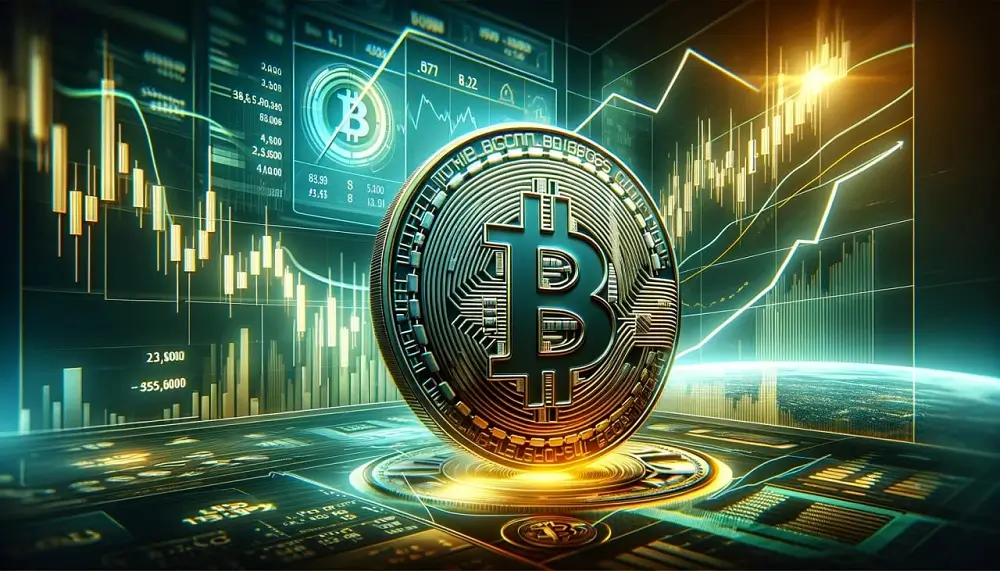London-listed companies are jumping into Bitcoin (BTC) as a way to revive their fortunes and attract new investors. In the past week alone, at least nine firms have shared plans to buy Bitcoin or have already done so.
These companies come from different sectors, including web design and gold mining. They hope to follow the example of Michael Saylor’s US company, MicroStrategy, which saw its valuation skyrocket after adopting a Bitcoin treasury strategy.
Regulatory Softening Fuels Bitcoin Rush
The excitement reflects a shift in London’s market. Investors there have had limited exposure to crypto because of strict regulations and fewer digital asset stocks. In contrast, US regulators last year allowed stock market funds that invest directly in Bitcoin.
As a result, asset managers like BlackRock and Fidelity have already received nearly $50 billion in their Bitcoin funds. Charles Hall, head of research at Peel Hunt, said this new move gives equity investors a simpler way to access an asset class that many have found too complicated.
Most UK firms taking this route are small and see BTC as a way to spark big gains in their share prices. Many of these firms trade on the Aquis Exchange, known for microcap stocks, while a few are on the main London market.
One example is Tao Alpha, an AI services company. It announced a plan to raise £100 million, citing “unprecedented demand” from investors after it revealed its Bitcoin strategy last week.
Bitcoin Mania Sends UK Firms from Obscurity to Billion-Dollar Dreams
Another striking case is Smarter Web Company, a web design firm from Guildford. It was worth only £4 million but soared to over £1 billion in just two months after sharing its Bitcoin plans in April.
Though its shares have since dropped, the initial jump inspired other companies. Panther Metals, a mining business, reported a £2.2 million loss last year.
This month, it bought a single BTC, as promised in June. Its shares have climbed 81% this month alone. The company’s CEO, Darren Hazelwood, said they aim to build their Bitcoin holdings as quickly as possible.
Their short-term target is £4 million worth of Bitcoin. Meanwhile, the UK government has said it wants to make the country a hub for digital assets. This push follows moves in the US, Hong Kong, and the EU to develop their crypto regulations.
In May, the Financial Conduct Authority suggested lifting some bans on retail investment products linked to crypto. The FCA’s chief, Nikhil Rathi, defended their cautious approach, citing crypto’s role in money laundering and terror financing risks.
Struggling Bluebird and Vinanz Rebound on Bold Bitcoin Moves
Bluebird Mining Ventures is another company that has seen major growth thanks to Bitcoin. Its shares jumped almost 400% after revealing its BTC plans in June.
The firm raised £2 million in debt to buy the leading cryptocurrency and plans to secure another £10 million soon. Its founder, Aidan Bishop, said BTC has brought the company “back to life.” Last year, Bluebird had a $898,000 loss, but Bishop believes BTC has “probably saved” them.
Vinanz, originally a Bitcoin mining firm, also stepped up its Bitcoin purchases. It now holds $3.85 million worth of Bitcoin. The company funds these buys through equity and debt sales.
Its CEO, Hewie Rattray, said there is clear investor interest in BTC, and they simply offer a regulated, listed way to access it. Vinanz is even planning to change its name to London BTC Company. It currently has a market cap of £83 million despite being unprofitable.
Small-Cap London Firms Bet on Bitcoin to Revive Growth and Market Appeal
BTC has seen a price increase of over 76% in the past 12 months. This surge has boosted confidence among these companies, encouraging them to turn to crypto even if their main businesses have struggled.
These bold moves show that London’s smaller companies are eager to chase the Bitcoin wave, hoping it will lift their share prices and win back investor trust. As more firms join this trend, the city’s financial scene may start to look a lot more like Wall Street’s crypto experiment, but with a uniquely British twist.








